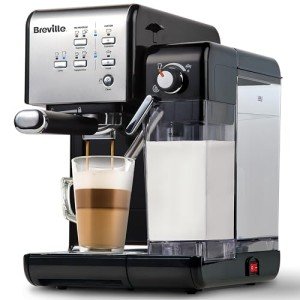Heat Exchange Espresso Machines: A Comprehensive Guide
Espresso machines have actually progressed substantially throughout the years, catering to the requirements of home baristas and coffee experts alike. Among these machines, heat exchange espresso machines have actually acquired popularity due to their ability to deliver constant performance and extraordinary brew quality. In Online Espresso Machines Store , we will explore the operations, benefits, and crucial functions of heat exchange espresso machines, supplying an extensive understanding for both prospective purchasers and coffee enthusiasts.
Comprehending Heat Exchange Technology
Heat exchange espresso machines run on a distinct concept that enables simultaneous water heating for brewing and steaming. They are geared up with a single boiler that makes use of a heat exchanger system. This function is considerable as it enables users to brew espresso while steaming milk concurrently, promoting efficiency in the coffee-making procedure.
How Does a Heat Exchange Espresso Machine Work?
The procedure starts with the machine's water inlet filling the boiler. As Online Espresso Machines Store warms up, it turns to steam. The ingenious heat exchanger uses hot steam to heat extra water in a different passage created particularly for the brew group. This means that water can reach the ideal brewing temperature without waiting for the boiler to adjust. The key actions consist of:
- Water Fill: Water is drawn into the boiler.
- Heating Process: The boiler warms up as water is transformed into steam.
- Heat Exchange: Steam heats water in the heat exchanger tube.
- Developing: Water from the heat exchanger is pressed through coffee premises, drawing out the flavors required for a rich espresso.
This process permits quick temperature adjustments and improved coffee extraction.
Advantages of Heat Exchange Espresso Machines
Heat exchange espresso machines use numerous benefits, especially for those looking to optimize their coffee experience. Here are some crucial advantages:
- Simultaneous Brewing and Steaming: Users can brew espresso while steaming milk, making it ideal for hectic cafes and home baristas who value effectiveness.
- Temperature level Stability: The boiler's steam pressure assists maintain a steady temperature, which is critical for consistent espresso extraction.
- Adaptability: The style enables quick changing in between brewing and steaming, making it easier to produce numerous coffee drinks, from lattes to coffees.
- Easy to use: Models typically include accessible controls, making it feasible for both newbies and knowledgeable baristas to produce quality beverages.
- Professional Quality: Heat exchange machines are frequently used in commercial settings, providing users with high-quality brewing efficiency at home.
Key Features to Look for in Heat Exchange Espresso Machines
When considering the purchase of a heat exchange espresso machine, there are a number of functions that one must consider:
- Build Quality: Look for machines made of long lasting materials, such as stainless steel or brass, ensuring longevity.
- Boiler Size: A bigger boiler will hold more water and sustain higher output in time.
- PID Temperature Control: This function helps keep constant brew temperature levels, which can enhance the coffee-making process.
- Group Head Design: Machines with a saturated or semi-saturated group head offer much better temperature level stability.
- Reduce of Use: User-friendly user interfaces and user-friendly controls enhance the overall experience for baristas at all ability levels.
- Steam Wand Quality: A great steam wand with appropriate insulation and flexibility enables much better texturing of milk.
- Water Reservoir Size: Depending on your requirements, think about how often you want to refill the water tank.
Contrast of Popular Heat Exchange Espresso Machines
To much better understand the choices offered in the market, listed below is a comparison table of some popular heat exchange espresso machines:
| Machine Model | Boiler Size | PID Control | Cost Range | User Ratings |
|---|---|---|---|---|
| Profitec Pro 700 | 2.0 L | Yes | ₤ 2,000-₤ 2,500 | 9.5/ 10 |
| Rocket Espresso R58 | 1.8 L | Yes | ₤ 2,400-₤ 2,800 | 9.4/ 10 |
| Elekta Bianca | 1.8 L | Yes | ₤ 2,500-₤ 3,000 | 9.6/ 10 |
| La Spaziale S1 Vivaldi II | 1.5 L | Yes | ₤ 1,800-₤ 2,200 | 9.2/ 10 |
| Bezzera Magica | 1.2 L | No | ₤ 1,600-₤ 1,800 | 9.0/ 10 |
Frequently Asked Questions About Heat Exchange Espresso Machines
What is the primary difference between a heat exchange and a dual boiler espresso machine?
While both types can brew espresso and steam milk at the exact same time, dual boiler machines have separate boilers for brewing and steaming. On the other hand, heat exchange machines make use of a single boiler and a heat exchanger to accomplish the same function.
Are heat exchange machines ideal for novices?
Yes! Lots of heat exchange machines are developed with easy to use functions, making them available for beginners. With correct guidance and practice, users can quickly produce quality espresso.
What type of maintenance do heat exchange espresso machines require?
Routine maintenance includes descaling, cleaning the boiler, inspecting seals and gaskets, and keeping the group head clean. Routine upkeep makes sure durability and consistent efficiency.
Can I use a heat exchange machine for various types of coffee drinks?
Absolutely! Heat exchange machines allow users to produce a range of coffee beverages, including espresso, lattes, coffees, and more.
Heat exchange espresso machines represent a blend of development and custom, providing coffee lovers with the tools required for crafting the perfect cup. Their ability to simultaneously brew and steam, integrated with precise temperature level control, makes them a compelling option for both home baristas and professionals. With the right knowledge on functions and upkeep, users can open a world of beautiful coffee experiences, guaranteeing that each sip is as wonderful as the last.

